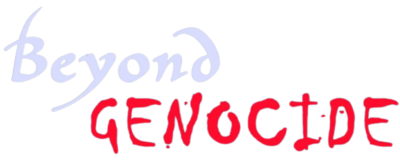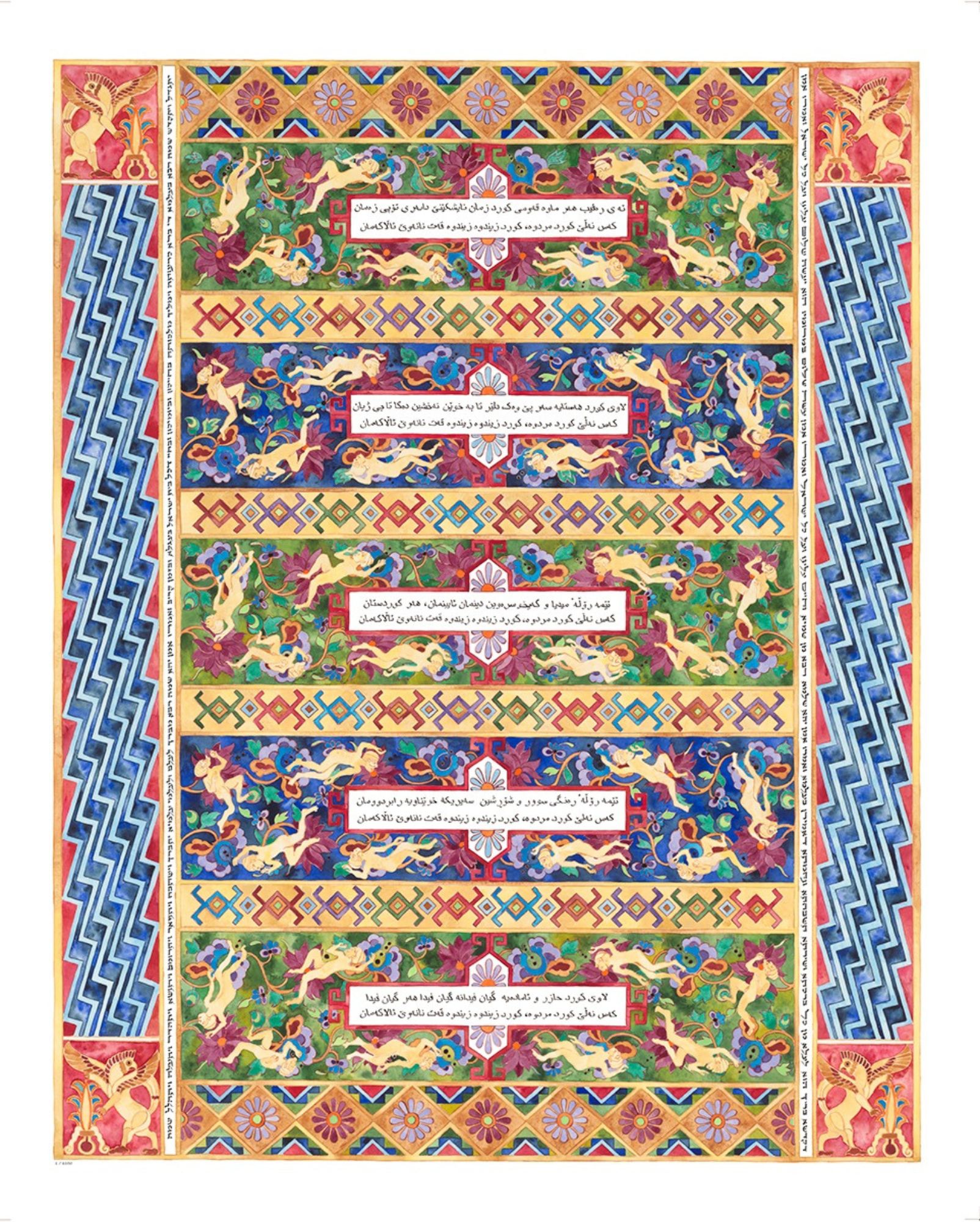The Illuminations
For the best experience, we recommend viewing this page on a desktop computer. Images may not be available for full display on mobile devices.
Iraq
Beyond Genocide #12, completed 200x.
The independent Kurdish people of northern Iraq were targeted for ethnic cleansing, discrimination and chemical weapon attacks during much of the reign of dictator Saddam Hussein (1979–2003). The genocide campaigns launched against the Kurds were named Al-Anfal, known in the west as The Anfal Campaigns. The campaigns were named after the 8th chapter of the Koran, which is about a battle against “unbelievers”. In early 1987 Hussein named his cousin Ali Hassan as-Majid (a.k.a. “Chemical Ali”) as secretary general of the “Northern Bureau”. Ali promised to “solve the Kurdish problem and slaughter the saboteurs.” Forced relocation from ancestral homes began the campaigns. Those refusing to move became targets of chemical bombings. An area comprising over a thousand villages was designated a “killing zone” where indiscriminate gas bombings murdered over 100 thousand Iraqi Kurd civilians.
The strength, pride and ancient history of the Kurdish people is a celebratory punctuation to this composition. The Kurdish National Anthem “Ey Reqib” offers authentic claims to Kurdish identity and their connection to their homeland. Compositional details recall the ancient city of Ashur and symbolic fallen Assyrian soldiers as they parallel the gassed victims of Hussein’s chemical bombings several thousand years later. Reference to the Tigris and Euphrates Rivers, the Zagros Mountain Range and other historically relevant details are abstractly illustrated to remind the viewer of the dynamics of physical place and ritual as the sources of life and identity for the Kurdish people and the victims of the Anfal Campaigns.

